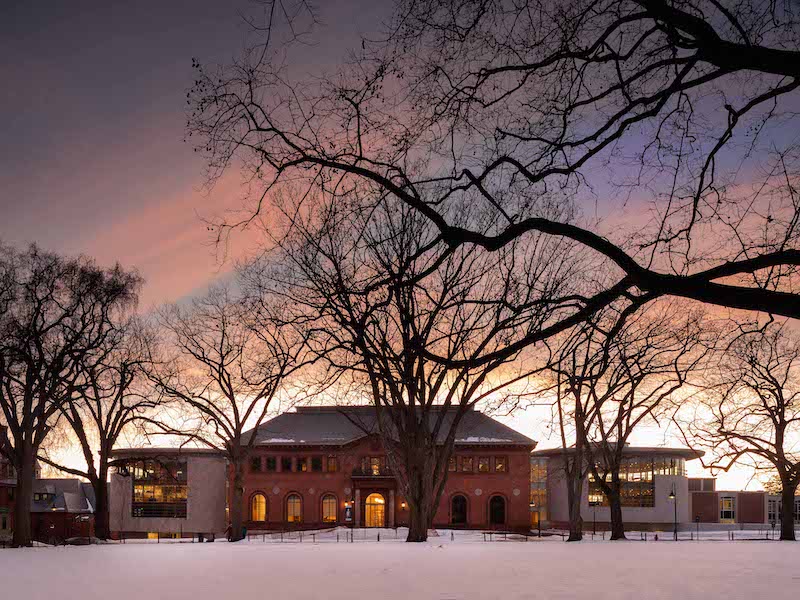Shawmut Design and Construction has recently completed the $120 million renovation of Smith College’s Neilson Library in Northampton, Ma. The project took the original, outdated building and reimagined it as the energy-efficient, intellectual heart of the campus.
In partnership with architectural designer Maya Lin and principal architect Shepley Bulfinch, the 200,000-sf project restored the building and created an energy-efficient design and flexible collaborative workspaces.
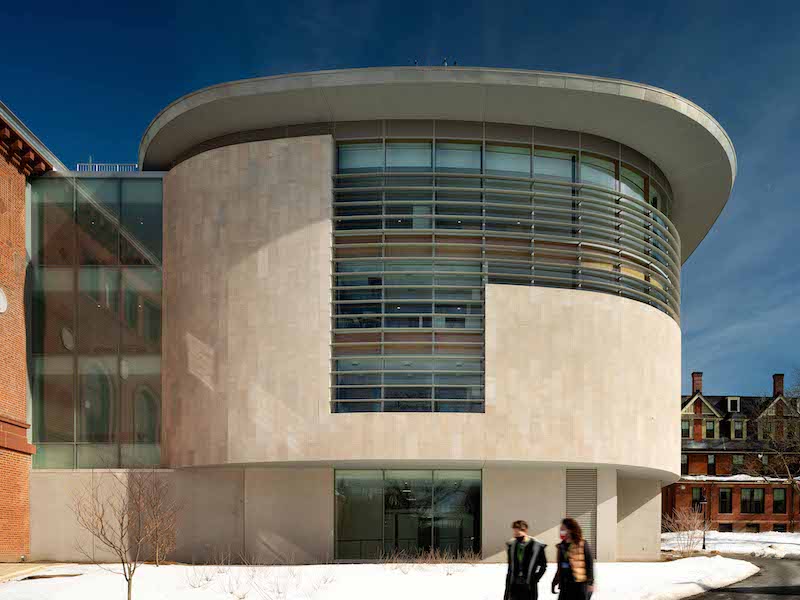
The building’s main entrance opens into a large atrium that features a four-story oculus. The building’s use of glass, wood, and stone works with the design to promote harmony with the surrounding exterior landscape, designed by Edwina von Gal with Ryan Associates.
The original 1909 facade is incorporated into the reimagined building, which is composed of three distinct sections: the central core and two new wings. The new wings are dubbed jewel boxes for their curved, light-filled design made from a mix of masonry, wood, and glass.
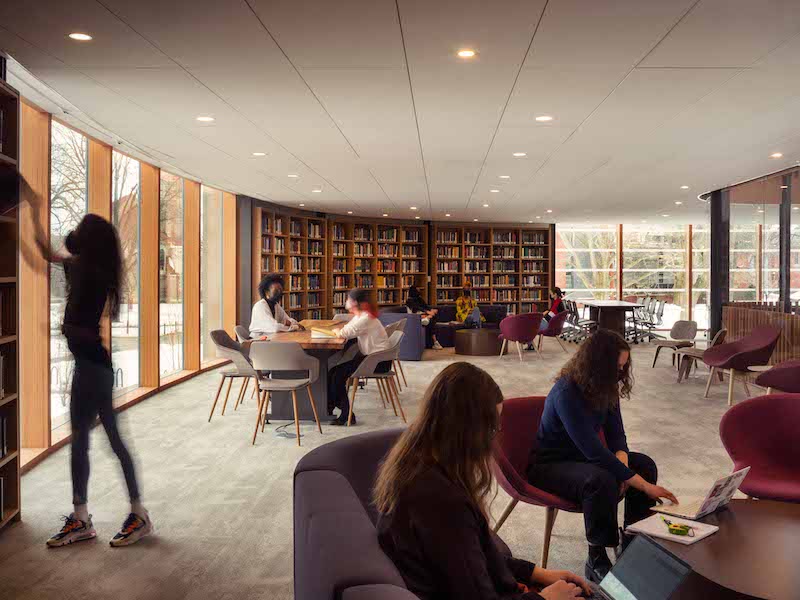
The north wing, named for Smith’s ninth president, Ruth J. Simmons, comprises spaces to support active learning and innovation. The south wing, named in honor of Smith’s eighth president, Mary Maples Dunn, brings together special collections (the Sophia Smith Collection, Rare Books, and College Archives) into one climate-controlled area.
SEE ALSO: MiraCosta Community College to receive new Chemistry and Biotechnology Building
Flexible, collaborative workspaces include the Learning Commons, the Jill Ker Conway Innovation and Entrepreneurship Center, and the Special Collections Seminar Room. A series of classroom spaces, a reading room, study areas, a sunken courtyard, and event spaces, and an outdoor amphitheater with shaded seating are also included.
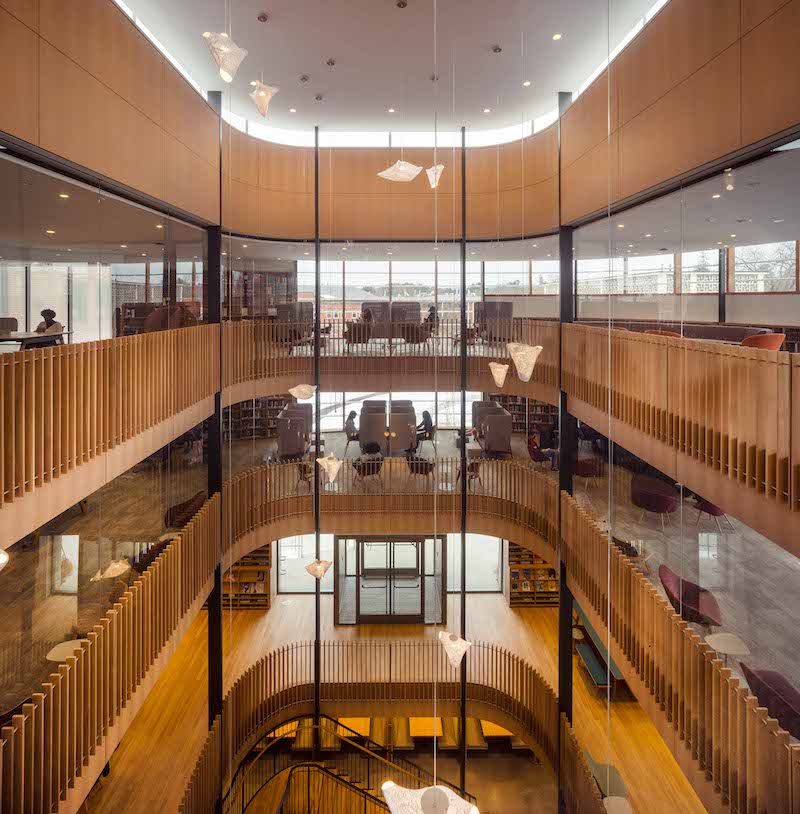
A Digital Media Hub offers studios for students to record podcasts, videos, and use other digital media; self-service labs for students to use technologies such as spatial analysis, gaming software, survey software, and GIS; a User Experience Lab for research and usability testing; and access to large-format and 3D printers.
Additionally, the Neilson Library is now connected to the recently renovated Alumnae Gym via an interior walkway. The Alumnae Gym provides additional learning spaces that are open 24/7.
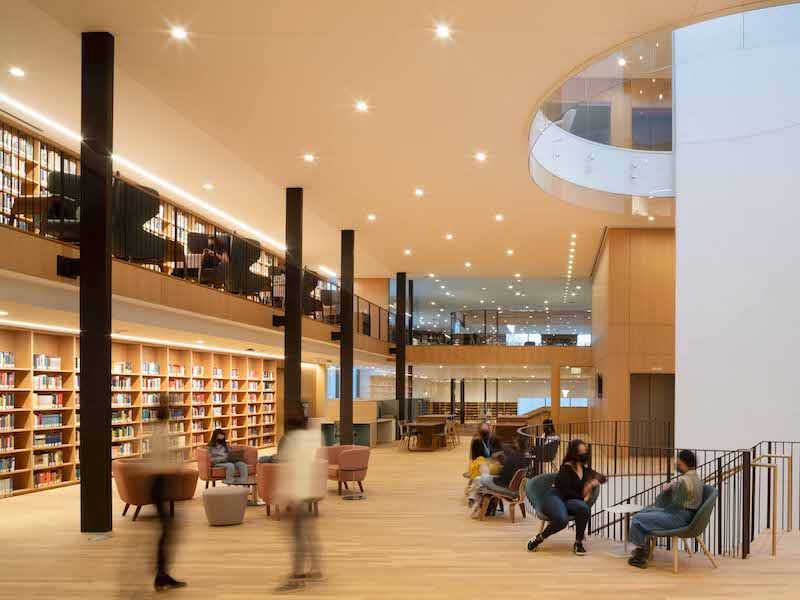
Sustainability features include a high-performance building envelope, advanced daylighting strategies, and materials that promote health and wellness. Throughout, the library incorporates materials that promote health and wellness by not containing harmful chemicals, as well as local, regional, and recycled products. The building has the ability to become an ‘all-electric’ complex and is pursuing LEED V.4, Gold Accreditation.
Related Stories
University Buildings | Jun 14, 2023
Calif. State University’s new ‘library-plus’ building bridges upper and lower campuses
A three-story “library-plus” building at California State University, East Bay (CSUEB) that ties together the upper and lower campuses was recently completed. The 100,977-sf facility, known as the Collaborative Opportunities for Research & Engagement (“CORE”) Building, is one of the busiest libraries in the CSU system. The previous library served 1.2 million visitors annually.
Higher Education | Jun 14, 2023
Designing higher education facilities without knowing the end users
A team of architects with Page offers five important factors to consider when designing spaces for multiple—and potentially changing—stakeholders.
University Buildings | Jun 9, 2023
Cornell’s new information science building will foster dynamic exchange of ideas and quiet, focused research
Construction recently began on Cornell University’s new 135,000-sf building for the Cornell Ann S. Bowers College of Computing and Information Science (Cornell Bowers CIS). The structure will bring together the departments of Computer Science, Information Science, and Statistics and Data Science for the first time in one complex.
Student Housing | Jun 5, 2023
The power of student engagement: How on-campus student housing can increase enrollment
Studies have confirmed that students are more likely to graduate when they live on campus, particularly when the on-campus experience encourages student learning and engagement, writes Design Collaborative's Nathan Woods, AIA.
Urban Planning | Jun 2, 2023
Designing a pedestrian-focused city in downtown Phoenix
What makes a city walkable? Shepley Bulfinch's Omar Bailey, AIA, LEED AP, NOMA, believes pedestrian focused cities benefit most when they're not only easy to navigate, but also create spaces where people can live, work, and play.
Higher Education | May 24, 2023
Designing spaces that promote enrollment
Alyson Mandeville, Higher Education Practice Leader, argues that colleges and universities need to shift their business model—with the help of designers.
University Buildings | May 17, 2023
New UC Irvine health sciences building supports aim to become national model for integrative health
The new College of Health Sciences Building and Nursing & Health Sciences Hall at the University of California Irvine supports the institution’s goal of becoming a national model for integrative health. The new 211,660-sf facility houses nursing, medical doctorate, pharmacy, philosophy, and public health programs in a single building.
University Buildings | May 11, 2023
New ‘bold and twisting’ building consolidates School of Continuing Studies at York University
The design of a new building that consolidates York University’s School of Continuing Studies into one location is a new architectural landmark at the Toronto school’s Keele Campus. “The design is emblematic of the school’s identity and culture, which is centered around accelerated professional growth in the face of a continuously evolving labor market,” according to a news release from Perkins&Will.
Sustainability | May 11, 2023
Let's build toward a circular economy
Eric Corey Freed, Director of Sustainability, CannonDesign, discusses the values of well-designed, regenerative buildings.
Digital Twin | May 8, 2023
What AEC professionals should know about digital twins
A growing number of AEC firms and building owners are finding value in implementing digital twins to unify design, construction, and operational data.


